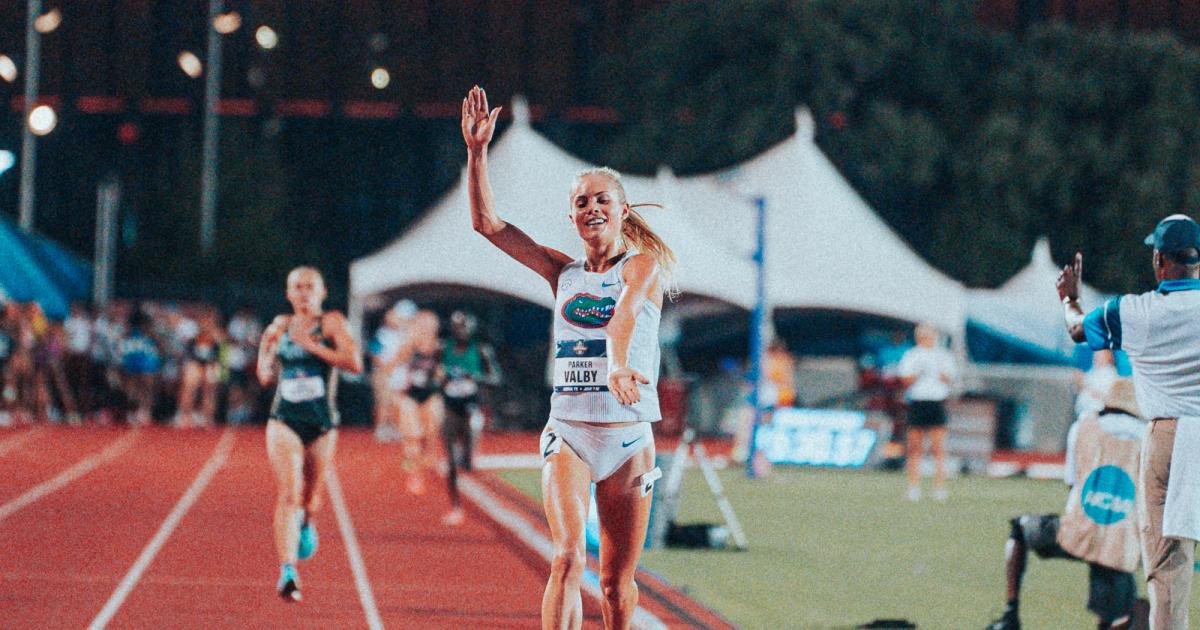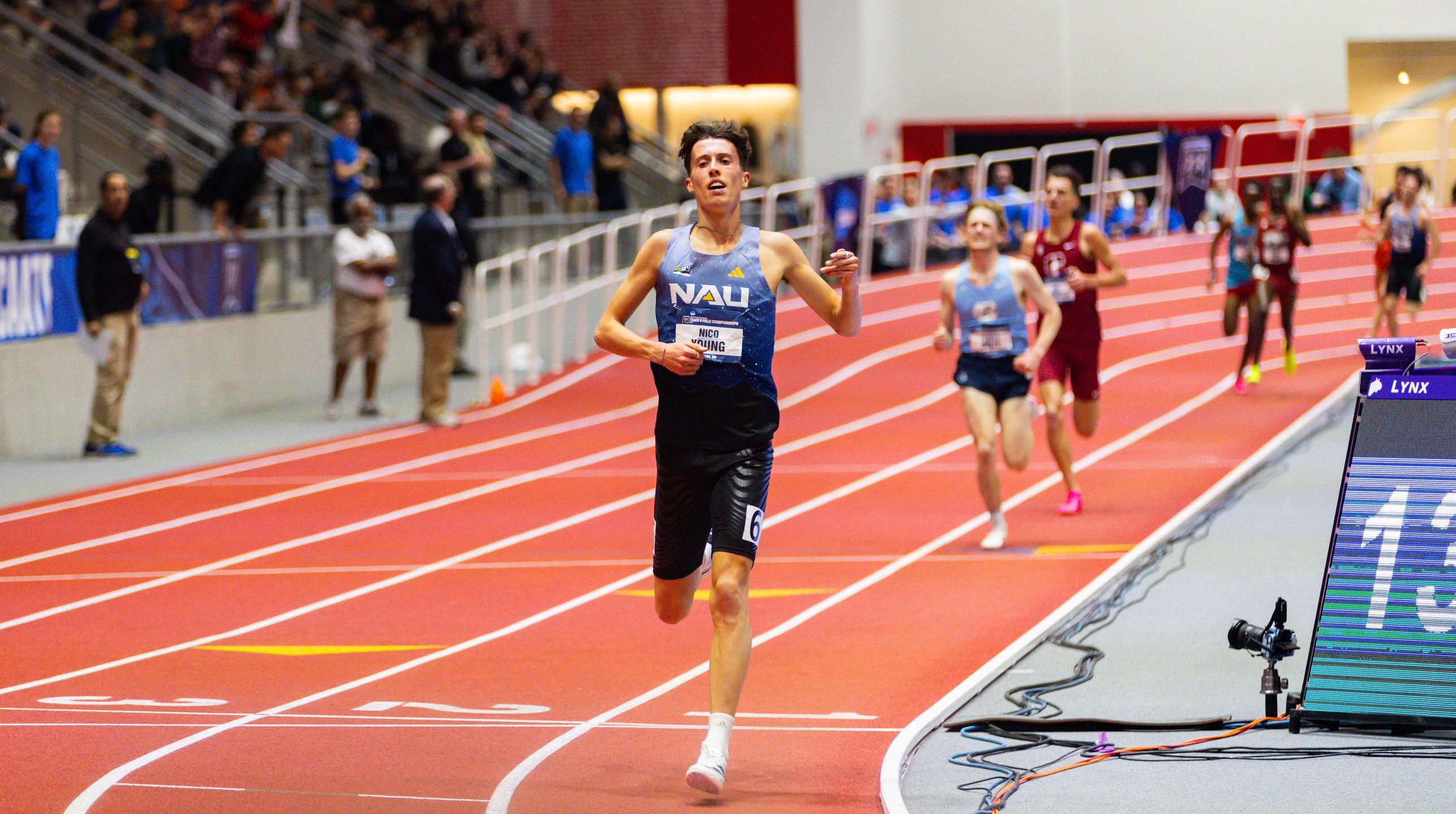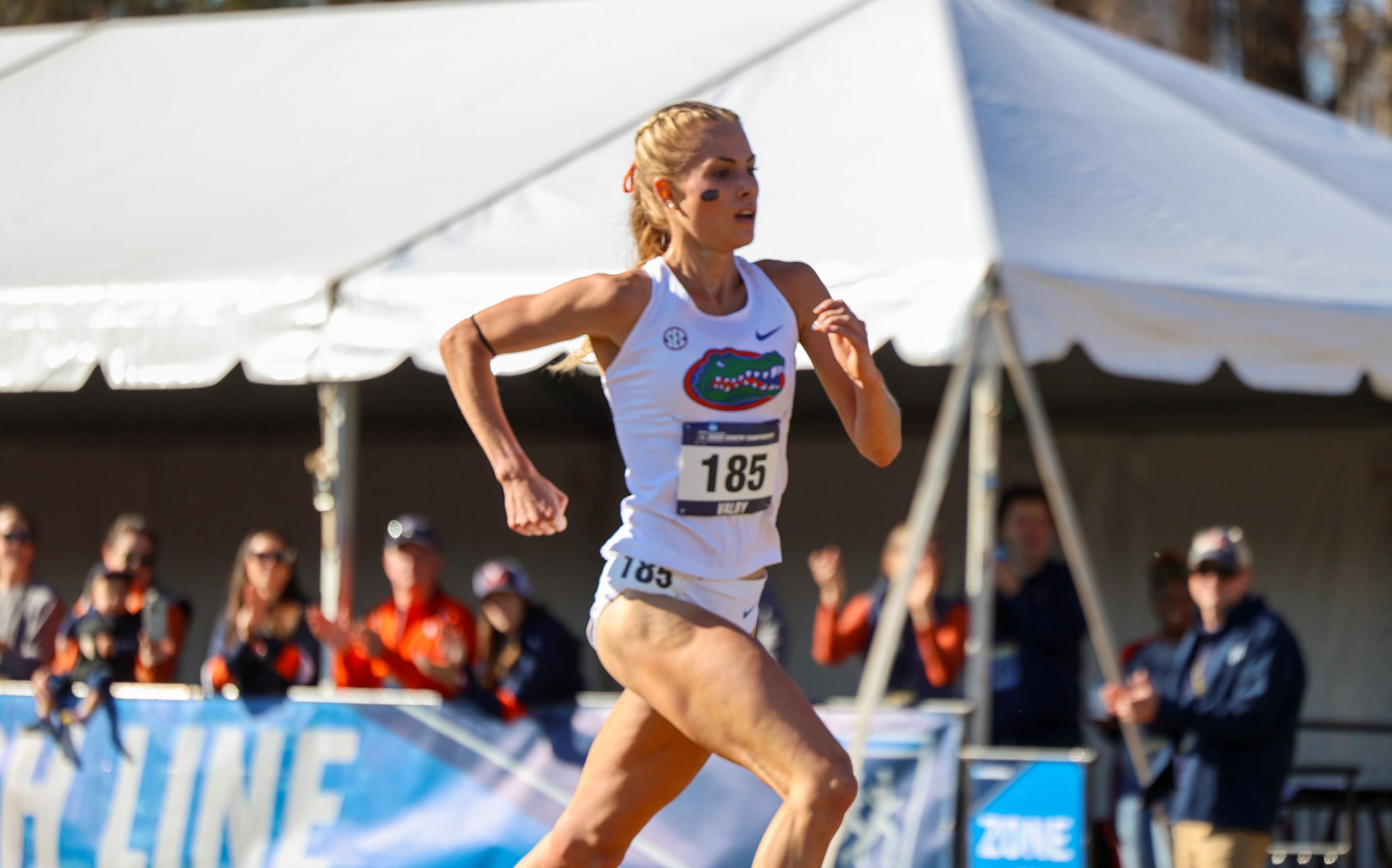By Rachel DaDamio
June 4, 2024
While watching the NCAA East Regional women’s 10,000m race, it was hard not to notice Parker Valby’s insane progression to eventually weave her way through the field and win. It got me wondering if this type of progression is typical and if there’s a common race strategy to qualify for the NCAA Championships.
I pulled data from all four of the 10,000m regional races (men’s and women’s races in both the east and west) and looked at each athlete’s place at every lap of the race, specifically focusing on the qualifiers to nationals. To qualify for nationals, you need to be in the top 12. I focused on these top 12 athletes and their positions throughout the race.
What does the data tell us?
The race is not decided by 2000m, but it basically is by 8000m.
Men’s West Regional - At 2000m, only half the qualifiers were in a qualifying position. However, from 7200m onward, the top 12 were set.
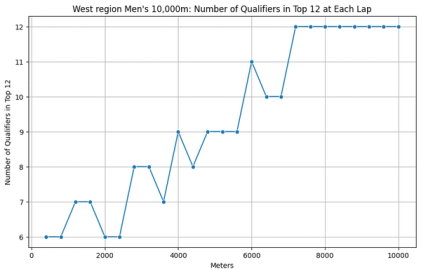

Men’s East Regional - At 2000m, only five qualifiers (less than half) were in the top 12. At 8000m, that number was up to 10. At 8200m, it was 11. This race was decided in the last lap, but only one new athlete entered the top 12 in the last lap.
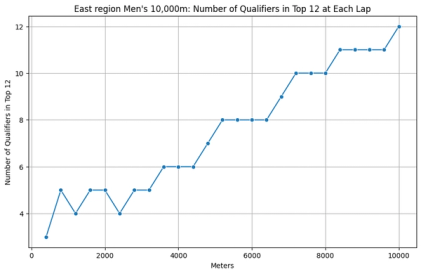
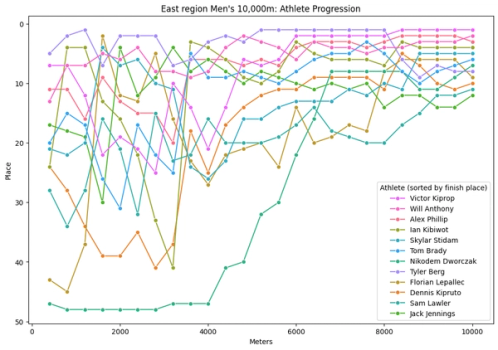
Women’s West Regional - At 2000m, only five qualifiers (less than half) were in the top 12. At 7600m, all 12 qualifiers were in position.
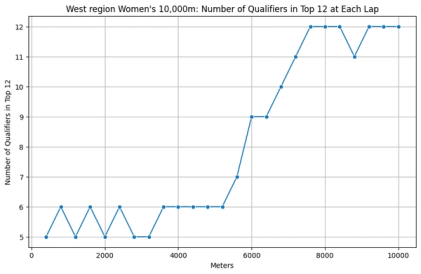

Women’s East Regional - At 2000m, only four of the qualifiers were in a qualifying position. At 8000m, 10 of the qualifiers were in position.
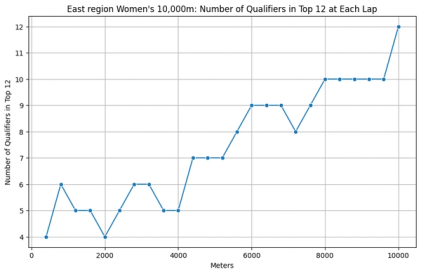
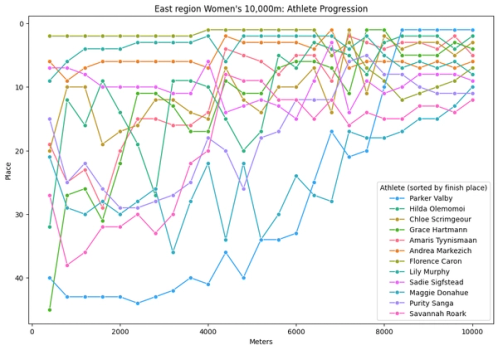
Takeaways
What does that mean for race strategy? Don’t freak out at the start of the race if you’re not where you want to be, but don’t rely on the last part of the race to “make your race.” This is like the marathon where it’s impossible to go out too slow, but you also can’t rely on the last 6.2 to run a huge negative split.
The qualifying athletes might take their time getting into the top 12, but once they’re there, they stay. What does this mean for race strategy? Commit when you make your move on race day!
The Best Progression and Most Steady Runner In Each Region
Men’s West Regional – Best progression(s) - Alex Maier & Adisu Guadie (Oklahoma State) moved from ~40th place at 3000m to qualifying position at 7200m and finished 10th (Guadie) and 11th (Maier).

Men’s West Regional – Steady runner - Ernest Cheruiyot (Texas Tech) was between second and eighth place the entire race and finished fifth.
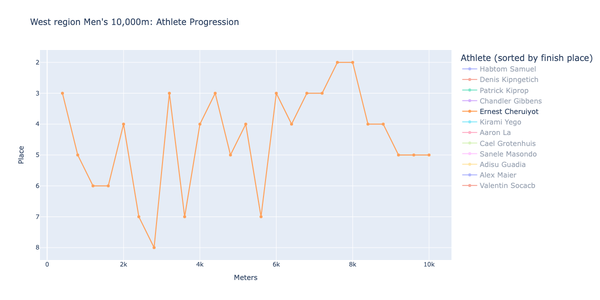
Men’s East Regional – Best progression - Nikodem Dworczak (Eastern Kentucky) progressed from 47th place at 4000m to eighth place at 6800m and finished the race in seventh.
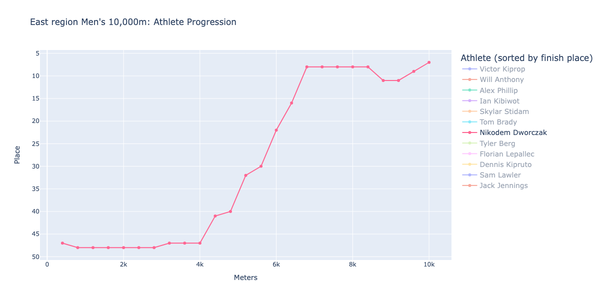
Men’s East Regional – Steady runner - Tyler Berg (Notre Dame) led the race from about 5000m to 8000m and finished in eighth; he was never outside the top nine.
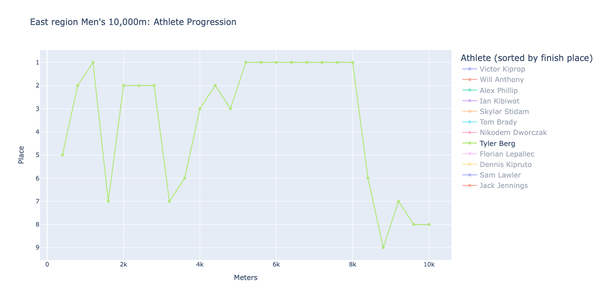
Women’s West Regional – Best progression - Molly Born (Oklahoma State) started the race in the very back of the pack. From 4400m to 7600m, she moved from 37th to sixth before finishing eighth.
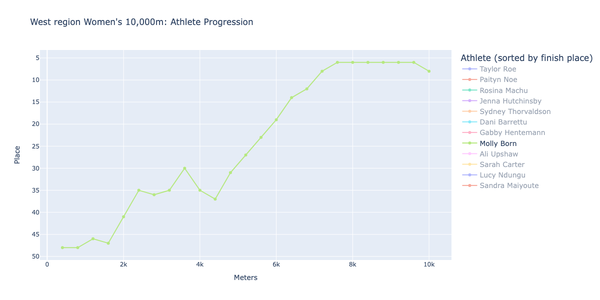
Women’s West Regional – Steady runner - Sydney Thorvaldson (Arkansas) - finished fifth and was between first and sixth the entire race.
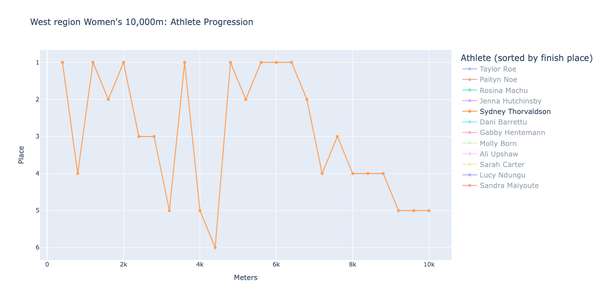
Women’s East Regional – Best progression - Parker Valby (Florida) was ~40th place until 5000m, progressed to ~20th place at 7000m, and then made her big move to first with a mile to go.
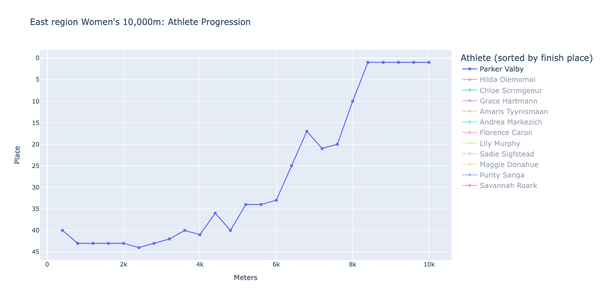
Women’s East Regional – Steady runner - Andrea Markezich (Notre Dame) was between first and ninth the entire race and finished sixth.
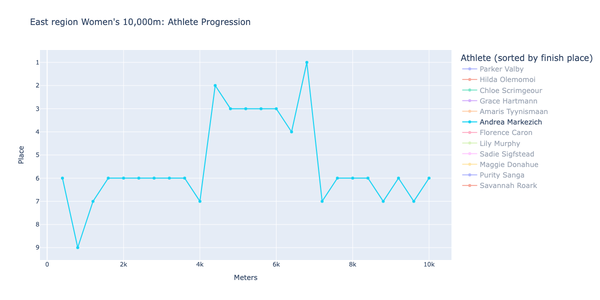
What does this mean for race strategy?
There’s not one right way to race. In training and races, you should practice having different people lead. You want to be comfortable leading, but you also want to feel comfortable in the middle of a big pack. I think one of the most underrated skills in running is the ability to remain calm with a lot of frenzy around you. We can debate all day long about what exactly was Parker Valby’s strategy in her NCAA 10,000m regional race. She knows. Coach Will Palmer knows. I thought maybe the goal was to run a really hard, fast mile on tired legs to practice for the Olympic Trials where the race will likely be very fast at the end. But, it also could have been to get her comfortable with running around people instead of by herself at the front of races.
Andrea Markezich's performance was also compelling even though it was so different from Valby's. She was always in the mix and qualified comfortably. The juxtaposition between Valby’s and Markezich’s strategies demonstrates that there isn’t one right way to race at Regionals. We see examples of progressions and running from the front – do what works for you.

Rachel DaDamio
Rachel DaDamio ran at the University of Notre Dame and moved to Chicago after graduating to work as a data scientist, where she’s also training for a fall marathon.
